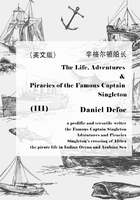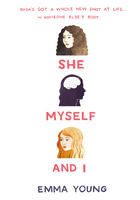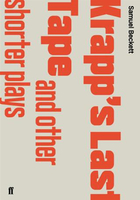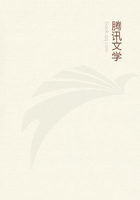The 36,000-Foot View
When I look back over the past few years, I see the evolution and the
growth of a program, of an organization, and of a community.
I see learning. I see dynamic interaction among experts in social
and online media and those involved in the creation and conveyance
of intelligence. It's time to expand that conversation, to talk about
innovation beyond tools—to talk about innovation as an art, as a
behavior, and as a necessity for survival and progress. Growth
and adaptation are part of a journey, one that cannot be
successful if taken alone. And so we come together.
—Geoffrey Fowler
Editor-in-Chief, The CIA World Intelligence Review (WIRe)
Load the boat.”
The phrase played over and over in his head while he boarded the plane.
As he took his seat, uncertainty ate at him, distracted him, turning the plane's cabin into one large noise. He was tired but had work to do. A couple chatted continuously in the seats behind him. It would be a long flight.
He unpacked his carryon, then let his head fall back, eyes closed. The meeting had been tough. He knew what he had to do to rebuild the business and with it his job. And he had to begin before tomorrow morning's meeting. In his mind, he started loading the boat.
He'd first heard the phrase at the university hospital where his wife had been cared for, and he'd asked a resident what it meant. “It means you're not alone. If you have a problem, if you need help, if you need to learn something new, there's a team of people you can call on at any time.” Over the course of his wife's treatment, he'd watched the medical team use every means they had to stay in touch with people they trusted, the team they'd built. These people learned in real time in real-life situations. They saved lives; they had saved her life. Maybe their approach to collaboration could save his business, too.
He had all the tools. He had his team. He'd done the work. He was well informed, but something was still missing.
When he started to load the boat in his mind, the noise of the plane disappeared. His fear and uncertainty dissipated. As the plane settled in, the Dave Matthews Band played through the earbuds his daughter had given him before the flight. He read email and watched a short video clip. Then he used the plane's wireless connection to check email and scan his social net. What he had to do turned into what he wanted to do. He had found his rhythm.
The computer screen danced in front of him. His fingers became an extension of his mind. His smartphone and laptop worked together as his fingers flew. What felt heavy before seemed weightless at 36,000 feet.
Tweets and texts flooded in from his worldwide team about the board members' perspectives, making it clear where his energy needed to take him. He filled in the missing piece of the presentation. He shared with his team, and he found his voice. He knew he'd succeed.
Load the boat. Instantly recall what you've been trained to do and put it to work. Learn as you do. Engage instead of escape. Thrive instead of survive. This is social learning at its best. Noise turned into music. Colleagues turned into collaborators. A symphony. The next day a board member said it best: “Pure music.”
The Workplace Has Changed
At this moment, your people are already learning with social media. They have already begun to reach out and connect in new and powerful ways. The question is, will you come along? Do you want to play a part in what and how they learn? Or do you want to try to stop them? Will you restrict them or free them to do the work you hired them to do? The work you do with them?
Workplace learning is a competitive advantage for every company. People need to learn fast, as part of the ebb and flow of their jobs, not just on the rare occasion they are in a class. Senior leaders urgently want to provide their people with something vibrant, effective, and cutting-edge to support their nonstop learning—something that will ensure that competitive edge.
As organizations search for ways to increase profits, save money, and compete, lighter and friendlier tools have become available to help them excel. These social media tools are changing the way people work, usually bypassing formal training altogether.
Fundamentally, this book is about how people learn socially, often but not always with technology. This book is not a plea to reorganize the training department or turn it into the social media team, although some of you may decide to do that. We will show how people in organizations can work together more effectively across departments with their employees, partners, and customers, aided by social media in the stream of work. We will show how this approach imbues learning into the essence of work and how it makes learning a valuable, ongoing process.
We don't focus on the tools here. They change fast, and we have set up a website where the details about the technologies can stay fresh. Visit the site at There you can contribute to the conversation and locate up-to-date information.
We encourage you to use this book to discover how social media tools facilitate learning, how they might be leveraged to extend and expand your interactions with colleagues, and how to use them to create something vibrant. As Chris Brogan, one of the top bloggers in the world, coauthor of Trust Agents, and author of Social Media 101 says, “Focus on connecting with the people, and the tools will all make sense.”[1]
Social learning is a fundamental shift in how people work—leveraging how we have always worked, but now with new tools to accelerate and broaden individual and organizational reach.
What Is the New Social Learning?
To understand social learning, we must first understand social media. Social media is a set of Internet-based technologies designed to be used by three or more people. It's rarer than it sounds. Most interaction supported by technology is narrowcast (one to one), often with a telephone call or an email message; niche-cast (one to small groups), for instance using email distribution lists or small-circulation newsletters; or broadcast (one to many), as in large-scale online magazines or a radio show.
Social learning is what it sounds like—learning with and from others. It has been around for a long time and naturally occurs at conferences, in groups, and among old friends in a café as easily as it does in classroom exercises or among colleagues online who have never met in person. We experience it when we go down the hall to ask a question and when we post that same question on Twitter anticipating that someone will respond.
While social media is technology used to engage three or more people and social learning is participating with others to make sense of new ideas, what's new is how powerfully they work together. Social tools leave a digital audit trail, documenting our learning journey—often an unfolding story—and leaving a path for others to follow.
Tools are now available to facilitate social learning that is unconstrained by geographic differences (spatial boundaries) or time-zone differences (temporal boundaries) among team members.
The new social learning reframes social media from a marketing strategy to a strategy that encourages knowledge transfer and connects people in a way consistent with how we naturally interact. It is not a delivery system analogous to classroom training, mobile learning, or e-learning. Instead it's a powerful approach to sharing and discovering a whole array of options—some of which we may not even know we need—leading to more informed decision making and a more intimate, expansive, and dynamic understanding of the culture and context in which we work.
The new social learning provides people at every level, in every nook of the organization, and every corner of the globe, a way to reclaim their natural capacity to learn non-stop. Social learning can help the pilot fly more safely, the saleswoman be more persuasive, and the doctor keep up to date.
For a long time, many of us have known learning could transform the workplace. We longed for tools to catch up with that potential. Only recently have changes in corporate culture and technology allowed this eventuality to unfold.
Clay Shirky, who writes about web economics and teaches new media at New York University and author of Cognitive Surplus, points out, “Prior to the Internet, the last technology that had any real effect on the way people sat down and talked together was the table.”[2]
Prior to the Internet, the last technology that had any real effect on the way people sat down and talked together was the table.
At its most basic level, new social learning can result in people becoming more informed, gaining a wider perspective, and being able to make better decisions by engaging with others. It acknowledges that learning happens with and through other people, as a matter of participating in a community, not just by acquiring knowledge.
Social learning happens using social media tools and through extended access and conversations with all our connections—in our workplaces, our communities, and online. It happens when we keep the conversation going on a blog rich with comments, through coaching and mentoring, or even during a workout at the gym.
Social learning is augmented by commercial tools, such as Face-book, Twitter, YouTube, blogs, and wikis, and with enterprise applications and suites of applications including Socialtext, Socialcast, Newsgator, and Lotus Connections. With some custom development, learning also can grow on enterprise social platforms such as IBM WebSphere Portal Server, Microsoft Sharepoint, SAP Netweaver Portal and Collaboration, and Oracle's Beehive.
Don't conclude this is all new, though. Social software has been around for almost 50 years, dating back to the Plato bulletin board system. Networks such as Compuserve, Usenet, discussion boards, and The Well were around before the founder of Facebook was even born. Only technology enthusiasts used those systems, though, because of clunky interfaces that didn't readily surface or socialize the best ideas.
The new social learning is enabled by easy-to-use, socially focused, and commercially available “Web 2.0” tools and “Enterprise 2.0” software that move services, assets, smarts, and guidance closer to where they are needed—to people seeking answers, solving problems, overcoming uncertainty, and improving how they work. They facilitate collaboration and inform choices on a wide stage, fostering learning from a vast, intellectually diverse set of people.
Training often gives people solutions to problems already solved. Collaboration addresses challenges no one has overcome before.
These new social tools augment training, knowledge management, and communications practices used today. They can introduce new variables that can fundamentally change getting up to speed, provide a venue to share spontaneously developed resources as easily as finely polished documents, and draw in departments that previously hadn't considered themselves responsible for employee development at all.
Social tools are powerful building blocks that can transform the way we enable learning and development in organizations. They foster a new culture of sharing, one in which content is contributed and distributed with few restrictions or costs.
Most of what we learn at work and elsewhere comes from engaging in networks where people co-create, collaborate, and share knowledge, fully participating and actively engaging, driving, and guiding their learning through whatever topics will help them improve. Training often gives people solutions to problems already solved. Collaboration addresses challenges no one has overcome before.
The new social learning makes that immediate, enabling people to easily interact with those with whom they share a workplace, a passion, a curiosity, a skill, or a need.
The new social learning allows us, as Stowe Boyd who first coined the term social tools and has been working for two decades observing how they affect business, media, and society puts it, “[to grow] bigger than my head. I want to create an idea space where I can think outside my mind, leveraging my connections with others.”[3]
What It's Not
Another way to think about the new social learning is to compare it with what it is not.
The new social learning is not just for knowledge workers. It can empower people who work on shop floors, backstage, on the phone, behind retail counters, and on the battlefield. It is not your corporate intranet, although features of social learning may be included there. Document management, calendaring, blogs, and online directories may contribute to learning socially, but they are often task oriented rather than community oriented.
It's not at odds with formal education. Students often use Twitter as a back channel for communicating among themselves or with instructors. Teachers can also use social media before and after classes to capture and share everyone's ideas.
It's not a replacement for training or employee development. Training is well suited for compliance, deep learning, and credentialing. Formal development programs are still needed to prepare employees to progress through the organization. Social learning can supplement training and development in the classroom or online. It complements training and covers knowledge that formal training is rarely able to provide.
It's not synonymous with informal learning, a term often used to describe anything that's not learned in a formal program or class. The broad category of informal learning can include social learning, but some instances of informal learning are not social—for example, search and reading.
It's not a new interface for online search, which could only be considered social because other people developed the content you discover. Finding content with a search engine does not involve interpersonal engagement—a hallmark of social learning.
It's not the same as e-learning, the term used to describe any use of technology to teach something intentionally. That broad category can include social tools and, if it's organized using an online learning community such as Moodle, can be quite communal.
It's not constantly social in the same way a party is. Often people are alone when they are engaged and learning through social tools. The socialness refers to the way interaction happens: intermingling ideas, information, and experiences, resulting in something more potent than any individual contribution.
Moving Theory Into Practice
A “social learning theory” was first put forward in 1954, standing on the shoulders of John Dewey and drawing on the budding fields of sociology, behavior modification, and psychology applied to understanding and changing conduct.[4] Ideas from social learning theory informed the thinking of later learning theorists, including Albert Bandura who wrote in 1977, “Learning would be exceedingly laborious, not to mention hazardous, if people had to rely solely on the effects of their own actions to inform them what to do. Fortunately, most human behavior is learned observationally through modeling.”[5]
The early focus of social learning theory was learning socially appropriate behavior by imitating others, which is only a small aspect of how social learning is used in practice today. Given the recent explosion of means for people to learn socially and the vast array of topics that can be learned from others, it's unfortunate what was called social learning had such a limited scope. Recognizing this, there will be times we shorten “the new social learning” to “social learning” here and in our work elsewhere to describe the broader issues and opportunity now available. Social learning is modeling, observation, and so much more.
Social constructivism is the theory of knowledge that seems to best describe how people learn together, whether in person or online. When you engage with people, you build your own insight into what's being discussed. Someone else's understanding complements yours, and together you start to weave an informed interpretation. You tinker until you can move on.
Swiss psychologist Jean Piaget laid the groundwork for this approach by challenging the behaviorist notion popular in the 1950s that people were passive recipients of external stimuli that shaped how they behaved.[6] Instead, Piaget conducted many experiments to demonstrate that people are active participants in their learning. They interpret what's around them based on their unique current understanding of the world, and then they continually modify their understanding as they encounter new information. Piaget's discoveries eventually led to the concept and practice of discovery learning for children and the use of role-play and simulation for adults. Active participation is the key in both cases.
This set the stage for Peter Berger's and Thomas Luckman's social construction of reality, which led to the prominence of social constructivism.[7] We are social creatures. If we play an active role in creating our views of reality, then the groups we participate in also contribute. Our reality is shaped by our social interactions. These exchanges provide context—socially scaffolding what you have already learned with what another person has learned and so on. This generates a virtuous spiral, socially generated and built and more powerful than any one participant could create individually.
In a world of rapid change, we each need to garner as much useful information as possible, sort through it in a way that meets our unique circumstances, calibrate it with what we already know, and re-circulate it with others who share our goals.
The new social learning leverages online communities, media sharing, microsharing, content collaboration, and immersive environments to introduce people to ideas in quick bursts, when it suits their workflow, without a big learning curve, and in a way that more closely mirrors how groups interact in person.
Social constructivism has become timely because work has for so long focused on what's known. To triumph today, we must now understand new information and complex concepts—what hasn't been known before and is often more complicated than one person can figure out alone.
The 21st century mind is a collective mind where we access what we know in our friends' and colleagues' brains. Together we can be smarter and can address ever more challenging problems. What we store in our heads may not be as important as all that we can tap in our networks. Together we are better.
Why Is This Happening Now?
The convergence of three key trends accelerates the need for social learning. Although some of these trends have been observable for decades, their influence compounds.
Three Converging Workforce Trends
Expanding opportunities for personal connection
Emerging expectations from shifting workforce demographics
Increasing reach of customized technology
Expanding Opportunities for Personal Connection
We have always been social creatures. We have been naturally driven to communicate, converse, and share with one another since our ancestors came into being. This is part of our survival mechanism as well as our natural preference. Our ability to converse and share with one another has always been expanding.
When people on the farm worked with their neighbors, putting up a barn or exchanging wheat for corn, they shared information about a harvesting technique or a new recipe. They created and sustained social capital—the stock of social trust, norms, and networks developed through a flow of information and reciprocity drawn upon to solve common problems. Social capital became financial capital as two farmers who exchanged tools could do more while buying less.
The opportunities ramped up as transportation enabled us to become more mobile and expanded the number of people we could socialize with around town. Then the phone let our voices do the travelling and negated the requirement for us to be in the same place as those we wanted to talk with. As telephone lines expanded globally, distance became even less of a barrier for conversation and connections. As satellites and cellular and computer networks came online, we became able to communicate with anyone and everyone, anywhere and anytime.
Communication and collaboration reached a tipping point with email and online forums, then instant messaging, then voice over Internet, then video. Just as we thought we couldn't possibly be any more connected, our social nature fueled yet another expansion as we formed alliances and human networks of distributed organizations using commercially available then inside-the-firewall media tools.
These connections represent more than an expanding volume of conversations. We are witnessing a dramatic increase in our collective thinking, collaboration, and capacity to grow. Doug Engelbart, the father of personal computing, was prescient when he pondered a collective IQ half a century ago:
What if, suddenly, in an evolutionary sense, we evolved a super new nervous system to upgrade our collective social organisms? [What if] we got strategic and began to form cooperative alliances, employing advanced networked computer tools and methods to develop and apply new collective knowledge?[8]
We may now be realizing this dream. An opportunity to raise personal, organizational, and collective IQ has arrived. As stressed as our communication capabilities seem today, history shows this trend will continue as we figure out how to more effectively connect, collaborate, converse, and learn. We need to embrace the opportunity for personal connections and be willing to evolve.
Emerging Expectations from Shifting Workplace Demographics
Think back to the year you joined the workforce. Then reflect on how things were about six months into that job. Did you think you should be given the opportunity to make big splashes and reap rich rewards? Did you consider your off hours your own, reserved to pursue your passions? Many of us did. Yet we forget that when we label newcomers to the work-force as unrealistic about advancement or uninterested in working hard.
Some of the qualities associated with the youngest generations in the workforce today are qualities of age, not generation. Brashness, dissatisfaction with the status quo, and constant questioning are characteristics many of us had when we were young. Because we didn't have Facebook connections with friends reinforcing our perspectives, let alone magazines and blogs showcasing young people who became chief executive officers at 19, we abandoned those mindsets to fit in.
Have your expectations of the workplace changed in this newly connected world? Are many things the same as they were as recently as last year? If you were to go to work for your company now, would you not have higher expectations than you had in the past? We certainly would.
Our wide look at demographic shifts has convinced us that organizations of all types and sizes have a lot to learn and do differently if they are to attract and keep the talent—of all ages—they need to succeed. It's not all about Millennials (also known as the Net Generation and Generation Y). Many of us, their older colleagues, also find that new social technologies allow us to work in ways we never believed would happen in our lifetime.
These shifts are about everyone in the workforce. We don't discount the generational factor; we simply see it as part of the whole.
We believe differences in generation, gender, and consumer outlook together provide a useful framework to address a changing workforce and workplace. Success will go to those businesses savvy enough to understand, learn from, and leverage these shifts.
We should aspire to create a workplace that uses the talents of everyone, connecting them in meaningful ways, regardless of differences in generation, gender, and consumer outlook.
Generation
By 2014, potentially half the workforce will be from Millennials. Overall, this generation has a high comfort level with technology and broad expectations about using it to learn. The previous generation, Generation X, shares many of these expectations but has learned to navigate slow-to-change workplaces. Millennials and generations after are not as apt to put up with inefficient ways.
Fairly soon, Generation Z will begin entering the workforce. They are even more intimate with technology and have higher expectations for instant answers and constant connectivity than Millennials.
Baby Boomers have already begun to retire. Although the perception exists that older workers do not widely embrace technology, a recent survey by ASTD shows that 79 percent of Baby Boomers, compared with 76 percent of Millennials, believe that social media tools are not being used enough for education activities within organizations.[9]
Generations
Depending on the author or commentator, the dates that demarcate the generations can vary. For the purposes of this book, we've used the Pew Research Center's report titled “Millennials: A Portrait of Generation Next.”
Baby Boomers: 1946–1964
Generation X: 1965–1980
Millennials, Net Generation, or Gen Y: 1981–1997
Generation Z: After 1997.
Source: Pew Research Center, Millennials: A Portrait of Generation Next (Washington, D.C.: Pew Research Center, 2010).
Gender
To add to the demographic shift, estimates suggest that within this decade nearly 60 percent of the workforce will be female, a group more likely to turn to its social networks for insights and perspectives than males.[10] Studies show that women experience a physiological and emotional change when they connect verbally—and combined with new ways to easily maintain, organize, and create new connections, these networks demonstrate value to women more quickly because these connections feel more like experiences they have off line.
Consumer Outlook
Another shifting workplace influence is consumer savvy. Rich media around us everywhere—on TV, on the Internet, in stores, and on mobile phones—have changed our expectations about communication inside our companies, too. We bring our knowledge and assumptions from the marketplace to work. As a result, we are no longer willing to put up with hard-to-manage interfaces, poor quality events, or questionably useful design because we now know—we've experienced—better alternatives.
Personal Matters
Regardless of generation or gender, most employees no longer have someone staying at home to handle personal matters while they are at work. To take care of ourselves, we divide our energy and focus between work and home. Organizations that prohibit this through policy or technology controls become poor guardians of their employees and limit their capacity to attend to small items that may become big distractions.
When people of all ages rely on technology, they see they can work anytime, anyplace, and that they should be evaluated on work results—not on how, when, or where it was done.
Increasing Reach of Customized Technology
As consumers, we have grown to expect manufacturers and retailers to customize all sorts of things for us: houses, personal computers, jeans, sneakers, credit card billing cycles, and so on. A new breed of technology and new forms of distribution replace a long history of mass production with mass customization.
This trend is moving to the workplace in mashups, assembling unique items to create something new. Producing new results from pre-existing bits and pieces can result in new songs, new software, new courses, and new job roles.
Wayne Hodgins, a futurist focused on technology, standards, and knowledge creation, coined the term “snowflake effect” to describe the exponentially growing trend toward extreme mass customization for every person, every day.[11]
We see four types of mashups influencing how people learn socially: role, workgroup, content, and management.
Role Mashups
Although the word mashup is new, in the 1970s, Alvin Toffler wrote that a society neatly divided into producers and consumers would change to one composed of “prosumers” who would produce and consume.[12]
A similar blurring of roles occurs in social learning with everyone acting as both learners and teachers. Rather than simply doing two jobs, the mashing up of roles creates a whole new way of working.
This intersection can be credited with the rapid adoption of social media in society. It fundamentally changes our level of participation from being recipients to being creators and innovators, heightening engagement and focus in the same way that knowing we are going to write about or teach something heightens our senses as we take in new information.
Mashups change work's traditional linear and separate roles into a culture of co-production, co-design, and co-development, mixing responsibilities among everyone involved in a new cyclical process. In the case of the new social learning, it's not about simply giving people online communities or wikis and getting out of the way. It is about a new iterative and inclusive model where anyone is able to create, use, publish, remix, repurpose, and learn.
Workgroup Mashups
Global connections are creating what New York Times columnist Thomas L. Friedman calls a “flat world,” where we can reach, team up with, and learn from people everywhere.[13] Through collaboration, outside the boundaries of traditional hierarchies and located anywhere on the planet, people can join forces to produce content, goods, and services.
In writing this book, we were able to assemble instant workgroups of people by sending queries over Twitter, engaging with those who follow us online, running ideas and questions by them, seeking their opinions and data they might know of to back up our hunches, and asking about the objections and arguments they hear and how they overcome them. Through these means we found relevant articles, organizations with compelling stories, critics to consult, and supporters who extended what we thought about these topics in ways that strengthened what we wanted to say.
Content Mashups
With the Internet, anyone can find almost anything about a topic. Often, we don't need to create new content because all the parts we need already exist. Mashups allow us to quickly access these relevant bits of existing information and put them together to form a new combination just right for the current need.
Sites such as Slideshare let you see collections of slides and enable downloading so you can pick out individual slides and mix and modify them to create your own just-right slide set. Slideshare also enables people to share comments, identify favorites, make recommendations, and find other content you might also like.
Thumbs-up and thumbs-down ratings on websites such as Reddit collectively create new content. When you add comments or assign stars evaluating your experiences with a product, service, or site, you also create new content.
Add to that fresh insights, some riffed on by others, when we share this information over Twitter, Facebook, or an in-house equivalent, or when we create a social bookmark using Digg or Delicious, where we add our perspectives and opinions on existing bits of content such as web pages, blogs, and articles.
Management Mashups
Leaders have always conveyed their visions. Now they use blogs, email, newsletters, video, and audio to widen their reach and to engage coworkers in a conversation.
The head of Intel's human resources learning and development group took this further by posting his semi-annual assessment scores to the entire Intel learning and development community and inviting discussion on a global level. In effect, he used a mashup to say, “Let's talk. How can I work on these things?” He used the technology Intel uses for collaboration (a companywide wiki) and feedback about him personally (his review) in a forum where people could add their perspectives on him and the organization to create something that hadn't existed before. He also asked people to be his employees and customers, coaches, and teachers. His role modeling and risk taking led to further conversations about being more strategic as a group and sped up how everyone learns.
Bob Picciano, general manager of IBM software sales, uses social tools inside IBM to reach out to his immediate teams and quicken the pace for people to reach corporate executives. He makes traditional hierarchies more blurred and more dynamic, getting the job done through networks and communities. When asked by Luis Suarez, social computing evangelist at IBM, how it feels for a very busy leader to use social tools while at work, Picciano responded, “Liberating! It's liberating to let command and control go.”[14]
“In many cases you aren't giving up control—you are shifting it to someone else that you have confidence in,” says Charlene Li, founder of Altimeter Group and author of Groundswell and Open Leadership. “More than anything else, the past few years have been dominated by the rise of a culture of sharing. This new culture has created an additional, timelier way to listen and, more importantly, opens it up to anyone in the organization who is willing to learn.”[15]
These new social tools can enable organizations to strike a balance between surfacing the knowledge people need and giving them the ease and freedom to learn in a healthy and open way.
Because of technological advances, especially social tools, we are no longer just surfing the Internet: In some ways, we are becoming the Internet. We are no longer following leaders: We are leading and influencing people and organizations. The Internet is becoming our supporting infrastructure. The power of mashups, the power of social media itself, is the inclusion, interoperability, sharing, and iteration that are so very human and social.
Learning can easily occur anytime, anywhere, and in a variety of formats. It always has, but now it's codified and easy for others to see. These new social tools can enable organizations to strike a balance between surfacing the knowledge people need and giving them the ease and freedom to learn in a healthy and open way.
Is This Learning?
Often when we talk about these trends and technologies, people ask us how we define learning.
We define learning as the transformative process of taking in information that, when internalized and mixed with what we have experienced, changes what we know and builds on what we can do. It's based on input, process, and reflection. It is what changes us.
By pigeonholing a very small segment of this transformative process with labels such as formal and informal, we marginalize learning. And so the rich and exciting conversations that transform people stop being considered learning at all. They get called communications, marketing, pre-sales, or customer support.
Learning is what makes us more vibrant participants in a world seeking fresh perspectives, novel insights, and first-hand experiences. When shared, what we have learned mixes with what others have learned, then ripples out, transforming organizations, enterprises, ecosystems, and the society around us.
Training, knowledge management, good leadership, and a whole host of organizational practices can add to an environment where people learn, but people can learn without this assistance, too.
In what is known as the 70/20/10 learning concept, Robert Eichinger and Michael Lombardo, in collaboration with Morgan McCall of the Center for Creative Leadership, explain that 70 percent of learning and development takes place from real-life and on-the-job experiences, tasks, and problem solving; 20 percent of the time development comes from other people through informal or formal feedback, mentoring, or coaching; and 10 percent of learning and development comes from formal training.[16]
To help see learning in a broader way, think of five people you communicate with and then identify at least three things you learned from each. Most people find this easier than recalling information they learned in a formal setting—not because they weren't offered useful topics to learn—but because when we connect with people, the exchange sticks with us. That engagement calls up something from within us or connects with an emotion, and that mental dance leaves a footprint we can walk in again. Reflecting on it later improves learning even more.
Some formal training programs are designed for gaining new skills or competencies. A new emergency medical technician (EMT) may not remember all the steps for cardiopulmonary resuscitation (CPR), but when she needs to use it, her body knows what to do. That learning is about more than recall, too. It's also about building muscle memory and a warehouse of options when the need to resuscitate someone arises.
Other training programs are for expanding your thinking or capacity to deal with situations ahead. The same is true of learning with people. This also comes from the community around you, in person or online. Etienne Wenger, author of Digital Habitats, Communities of Practice, Situated Learning, and other books, asserts that human knowing is fundamentally a social act.[17] By hearing about the experiences of others, you mash up snippets of data, add them to your own, and fit them into your sense of who you are and what you can do—together and with others. “To learn is to optimize the quality of one's networks,” says Jay Cross, author of Work Smarter and Informal Learning. “Learning is social. Most learning is collaborative. Other people are providing the context and the need, even if they're not in the room.”[18]
The traditional model of corporate training, where experts disseminate knowledge in one-time training events or someone presents all day, is being modernized. It needs to take full advantage of the larger opportunity for incidental learning, learning from interacting with others, and learning along the way in the course of work.
To learn is to optimize the quality of one's networks. Learning is social. Most learning is collaborative. Other people are providing the context and the need, even if they're not in the room.
Organizations and individuals will not be sufficiently served only by formal training. Diverse backgrounds and learning styles, and especially the complexity of people's jobs, determine what and how they learn. More critically, much of what needs to be learned is moving faster than we can create structured learning opportunities. Traditional training methods may be useful for teaching highly specific tasks or safety procedures, but evolving practices require more. Ad hoc and self-directed learning becomes a key strategy when we need to move fast.
The new social learning, which centers on information sharing, collaboration, and co-creation—not instruction—implies that the notion of training needs to expand. Marc Rosenberg, author of E-Learning and Beyond E-Learning, points out, “The metaphor of the classroom must make room for the metaphor of the library and the town hall.”[19]
Studies show that we learn what we need to solve problems and inform decisions in the real world. Learning and work strategist Harold Jarche often says, “Work is learning, learning work.”[20] Knowledge acquired but never put to use is usually forgotten. We may act as if we care about learning something and go through the motions, but we will forget it unless it is something we want to learn and it fits how we work.
Social learning is especially good at “loading the boat,” showing us that for any crisis or just to satisfy our curiosity, there is a network to support us at any time. It's what Howard Rheingold, who teaches about “virtual community” (a term he coined) and social media at the University of California–Berkeley and at Stanford University and author of books including The Virtual Community and SmartMobs, describes as the “online brain trust representing a highly varied accumulation of expertise.”[21]
Social learning is also very good at giving people a view into the little moments that happen between big activities, modeling behavior for others to observe, retain, and replicate—or avoid. We look across the tweet stream and tuck away lessons of finessed customer service calls, graceful endings to overlong presentations, and recoveries from cultural faux pas in front of visiting clients. Together we are better.
New developments such as life-like simulations, immersive environments, and ever more intelligent searches hold the promise of a new way—a deeper way—to connect and gain context-rich information that can transform us and thereby affect the organization, the society, and the people we serve.
How to Respond to Critics
One of the largest roadblocks to getting started on any new initiative is having the courage to face those who think what you're doing is dangerous or dumb. Maybe they have heard a story of someone doing something that scares them. Perhaps it's the unknown itself. Here are the most common stumbling blocks we hear about with regard to social learning and ways we believe you can address them. Each chapter provides a similar section to arm you with helpful ways to respond to critics.
Our Organization Will Never Embrace Social Media
The move to go social isn't a binary decision. Think of it as a Likert scale, where the truth is somewhere in the middle.
With no plans to use social media, organizations often ease into it. Microsharing works its way in because of an enterprise tool that can be implemented for free. Employees may be encouraged to comment on company blogs or to blog on their own. Perhaps an employee directory goes online and then someone creates a wiki. In some organizations, many adopt it, some even sponsor it, but it is not universally supported.
This is what embracing social media and the new social learning looks like. This is not jumping off the high dive. It's a process of adapting and adopting.
There are many ways to do this. Begin where you are and build where it suits your culture and environment. Just don't quash social media because you don't understand it. Learn from those who do.
People Will Say Inappropriate Things
If someone puts inappropriate content on the office door, you don't remove the door. If someone makes a tasteless joke over the telephone, you don't take away the phone. Social tools are often held to higher standards than traditional business tools because they are new, and bad stories circulate—go viral—quickly. Rather than ban the use of social tools, educate people how to use them effectively for work. They are the future of collaboration and learning at work, so the more you prepare people for how to use the tools respectfully and how to apply good social practices, the better. Also remember that people determined to harm you already have and always will find a way.
People Will Post Incorrect Information
One leader we spoke with expressed his concern this way, “Our employees may someday graffiti versions of our logo all over town, but we don't want to hand out spray paint.” He feared that encouraging the use of social media tools would encourage his people to write posts he wouldn't approve of.
If anything, organizations have more stories about how the opposite is happening or at least how misnomers are cleaned up quickly. When questions and answers take place in public, a greater likelihood exists that someone will correct misrepresented facts, old data, and rumors or speculation and that people, realizing their responses will be widely seen, will work toward accuracy (or at least as they perceive it).
Details of wide-ranging accuracy spread non-stop among coworkers and the market you serve. Information about your organization seeps out when people talk in restaurants over lunch or speak on a mobile phone while waiting in line at the post office. When you provide venues where people can share peer to peer and be accountable, the best information rises to the top because many people have rated it as useful. Different voices can weigh in and correct stuff. It is the wisdom of crowds, to borrow the term made popular by James Surowiecki.[22]
Most organizations we spoke with while researching this book do lock down some data from their enterprise resource planning (ERP) systems, especially human resources details, so people cannot change data without appropriate approvals. Rather than aim for total control (which is elusive), expand your circle of trust.
Our People Need Training, Not Socializing
Learning socially does not replace training. It may overlap a little and complement a lot, but it can address the knowledge transfer that training may never get to.
Ellen Wagner, learning industry analyst for Sage Road Solutions, notes that “Today we assess personal mastery of knowledge and skills with how well people can leverage their interconnected networks of connections to resources, information, and subject matter specialists. Workplace success has shifted from individual accomplishment to teams, communities of practice, and collaboration.”[23]
“The most significant thing going on in workplace training and development today is that we have punched through the walls of the classroom to allow experts and peers to bring their messages closer to work and life through technology,” adds Allison Rossett, professor emerita of educational technology at San Diego State University. “I had my doubts about the ‘learningfulness’ of social nets until I began to use one as a key aspect of a graduate class on performance consulting. I don't anymore. My students worked in teams, conducted research, created presentations, sought experts, stirred up conversations—even conflict—and endeavored to engage people beyond our registered classmates. Maybe 65 students over two years have been real students in the class, but we have touched more than 500 as they join, use, and add to the online net. It was much better in almost every way.”[24]
These Systems Compromise Classified Information
Organizations such as the U.S. Central Intelligence Agency (CIA), Wells Fargo, and the Mayo Clinic use social media widely even though their data are very sensitive. Rather than pronounce this new approach unfit for their environments, they practice good governance. They remind people to participate in online information-sharing communities with a full understanding that they bear responsibility for protecting sensitive or classified details.
“If you bring too many locks into an overly cautious culture, that's all you get: locks,” says Chris Rasmussen, “living intelligence” and mashup evangelist within the U.S. intelligence community.[25]
This Can't Be Governed
Rather than start with a large, heavy-handed policy condemning the use of social media, put in place simple rules stating when people should use which tool to communicate, create, or share specific types of information. Make it easier for people to classify information they create. Specify which data and content are appropriate for what use—especially use within the company. Also, the fact that people can see what others share provides a reason to self-monitor and for people to monitor each other. See the appendix for examples of governance policies.
Although many enterprises today constrain employee access to social media on the Internet at work, there are few ways to block all social media use by employees unless you forbid them from using their personal smartphones entirely. Foster instead good practices and educated decision making for a longer-term solution.
This Can't Be Measured
Network-oriented web analytics can capture how these tools and our practices evolve. They are ideal for measuring four things:
initiative (how many people logged in)
persistence (how many people came back, presumably because they found value)
connection (how the network expanded)
technology transition (fewer documents sent across email).
The transparent nature of social media makes it easier to measure what's going on because it can be observed and tracked. For instance, you can analyze what people are searching for and map what they find. You can analyze not only where people go with their social tools, but also how they get there, how long they stay, and what they do when they are there. Although this does not verify the transfer of knowledge or skills, it is a pretty good indication.
Good measures look at functional outcomes rather than simply asking, “Did they learn?” There is little value to the organization if people don't apply what they take in. The best measures go the next step to connect using new skills and knowledge with how they affect measures such as the bottom line.
The Next Level
Senior leaders consider employees' knowledge a strategic priority, yet they often leave the topic of learning out of strategy discussions because years ago they relegated it to the training department. Over the past 15 years, companies have striven to transform organizational learning by streamlining the training function and moving courses online. That doesn't address the deeper dilemma: Training and learning are not the same thing.
In our view, training describes an outside-in approach to providing known quantifiable content, while learning describes an inside-out process that originates with the learner's desire to know, either long held or spontaneously arising from recent events or a moving interaction.
The new social learning fosters an environment where people readily and easily pick up new knowledge and skills as the world shifts around them, meeting the demands of a constantly changing mobile world.
The new social learning transcends social media, training, or work-place learning practices of the past because it offers
more information sources: access to people who can lessen your uncertainty with vetted data, presentations, research, and wide perspectives that can help make your case (or your decision) easier
more dissemination points: people can self-serve their needs by accessing your resources, giving you back your time and simultaneously meeting their needs
an open approach to a wide network of communicators and collaborators who can help work flow.
If this is your first step into social media for learning, you are not alone. And if you're one of the veterans, please leverage these new tools and technology to share your knowledge and collaborate with us all.
Informing Decisions
Each of the next chapters begins with a case study from an organization deeply engaged in using social media to learn. We end this opening chapter, intended to provide context for the specific approaches addressed ahead, with the story of an organization using social media to offer context and make decisions clear.
Although your organization and the CIA may seem to have nothing in common, their objectives are not so different from those of every organization.
In 2006, a team of analysts at the CIA were tapped to replace an old print-based publication, primarily containing information from the president's intelligence briefing or about a crisis that had come to light. Like a newspaper, a certain amount of space was reserved for graphics and the rest was used for text. It worked, but it never shined.
Rather than build on what they already had, they started fresh, creating a new structure with social media sensibilities and a brighter vision.
The result is a daily electronic publication to update senior policy and security officials on trends and news overseas that have the potential to affect U.S. interests. The analysis in the publication is classified, noting the methods used to acquire the information and the sensitivity of the topics it contains. More than just a newspaper, it anticipates developments and makes projections about the future.
The CIA calls it The CIA World Intelligence Review (WIRe) because the world is what they cover, intelligence is their vocation, and review is what they do.
The WIRe is the CIA's collective and dynamic online presence. The WIRe leverages innovative tools and processes to make the richness of the CIA's content, including text, multimedia, graphics, and video, accessible wherever and whenever needed. Updated throughout the day, the WIRe's front page is dynamic and customizable, and it delivers reader-specific intelligence in a timely manner. The WIRe makes it easy to navigate volumes of reporting by linking analysis with source materials and providing robust search and feedback capabilities to support knowledge management.
For the CIA, being “central” doesn't simply reflect the title of a director, the name of the organization, or its role for legislators. It refers to being central, being essential to customers. The organization aims to lead the way, at the center, pioneering in times of change through demonstrating applied leadership.
In creating the WIRe, the team followed four “tracks.” These objectives mirror those of many organizations pursuing a new vision:
Retire and replace what no longer works. Get better, learn from errors, and commit to getting it right.
Embrace the best of what's being done in the private sector and apply it to intelligence, providing it in a user-friendly, online way. Customers accustomed to the BBC.com or Google News would know how to use this.
Develop a relationship with customers. Communicate with them; don't just transmit information to them. Pay attention to how they interact with the information and make data-driven improvements because of it.
Recognize that we won't always know how social media tools fit or how they will apply to us, but innovation and flexibility are part of our mission, and we'll weave them into our activity.
Although these four objectives have grown over time, the team still lives by them, mindful that customers don't purchase the WIRe with money; they invest in it with their time. And invest they have. The new system has eclipsed the old system that had about 750 viewers a day. The system now has more than 100,000 registered users across the globe. It has become the gold standard for information sharing in the U.S. government. It is printed out as part of the president's briefing, read at the cabinet level, and added to and read online by sailors and soldiers implementing national security. In these ways, it's as far reaching as it is impactful.
Rather than tell the story of a leader in an emerging government through words or a few static images, the WIRe can show a video clip, perhaps captured by a spectator, of how the leader whips up the crowd with a passion and a presentation style that reaches into the hearts of his audience. Now anyone seeing that clip can understand why he is so powerful.
The WIRe's purpose is to inform decisions, revealing what people think about as they make decisions. The WIRe is the CIA's voice, expressing as an institution its perspective on a topic. Now it also provides a means to express knowledge in a collaborative space others can link to and from, add to, and learn with, so it no longer represents discrete, isolated data. It expresses personal interaction attached to relevant information that with a few clicks connects to all other relevant information. It's interconnected and put into the context of what's going on in the world.
Rather than tell the story of a leader in an emerging government through words or a few static images, the WIRe can show a video clip, perhaps captured by a spectator, of how the leader whips up the crowd with a passion and a presentation style that reaches into the hearts of his audience. Now anyone seeing that clip can understand why he is so powerful.
With that, producers of intelligence can make points more vibrantly, creating presentations with great impact. Conveying the message goes beyond basic audio, video, and text sharing. Media are integrated from multiples sources and delivered and constructed by many people. People can discover a framework of intelligence relationships and see that everything is connected, for the most accurate representation.
In addition to shared intelligence published by the WIRe team, those viewing the information create new knowledge through the paths they take in their discovery, the comments they leave, and the tags and social bookmarks they create. Each intelligence gatherer—“learner” as it were—can see what someone else navigated to or tagged from a particular point of departure, then see what else she or he tagged as relevant for making informed decisions. By observing one another's tags and navigation, people can also discover other people and groups interested in similar topics, potentially making decisions about similar things. This facilitates new relationships and new perspectives.
The WIRe becomes a combination of daily intelligence and a grouping of topics, trails of interests, and search queries, leaving an archive that can satisfy a series of needs from customers that may not exist yet. Rather than try to tailor a presentation to meet those various needs, the WIRe becomes a diamond that in its raw form has value in itself. What gives it sparkle is the ability for each decision maker, each person seeking timely information, to cut in and look at it through an individual lens, looking for different facets. It might be that the detail you want is on the homepage, the highlights presented by the WIRe team, or through an RSS feed you create and view. A regional page gives you another aspect, and topic areas a third.
What makes it unlike systems that have come before it within or outside government is that it works in seemingly conflicting worlds—that of wide-open sharing and that of the highest security. Both extremes are dangerous. As the editor-in-chief of the WIRe, Geoffrey Fowler, says, “Share too broadly, and people can die. Hold your information too closely, decisions can be ill-informed and people can die. Our responsibility is to share broadly and securely—to make certain that these two critical needs are not viewed as incompatible extremes. The truth of the intelligence business is that information sharing and information security need to co-exist.”[26]
The WIRe provides openness and security in tandem by building on the CIA's security clearance system. Although there are restrictions, people using the system can search all the data holdings and discover trails leading to information they didn't even know existed. The organizational culture is moving from one focused exclusively on the need to know to one recognizing that success depends on the need to share. The WIRe focuses more on intelligence than the locks and walls between groups.
The CIA's ongoing interest and work with social media tools inspires us in our work. Its attention to both security and distribution reminded us as we wrote this book that systems should be facilitators for learning, not gatekeepers or megaphones. Social media can and should provide a medium for what people need now to make educated decisions. Working together, each of us, like pebbles tossed in a pond, can make both ripples and waves.
notes:
Load the boat.
[1] C. Brogan and J. Smith, Trust Agents: Using the Web to Build Influence, Improve Reputation, and Earn Trust (Hoboken, NJ: John Wiley & Sons, 2009).
[2] C. Shirky, “Keynote address on social software at the O'Reilly Emerging Technology Conference, Santa Clara, CA, April 24, 2003, retrieved June 17, 2010 at
[3] S. Boyd, Interview with authors, 2009.
[4] For more on social learning theory, see B. Elkjaer, “Social Learning Theory: Learning as Participation in Social Processes,” in The Black-well Handbook for Organizational Learning and Knowledge Management, ed. M. Easterby-Smith and M. A. Lyles (Malden, MA: Wiley-Blackwell, 2003).
[5]A. Bandura, Social Learning Theory (Upper Saddle River, NJ: Prentice Hall, 1977).
[6] J. Piaget, Psychology of Intelligence, Routledge Classics, trans. M. Piercy and D.E. Berlyne (London: Routledge, 2001).
[7]P. Berger and T. Luckman, The Social Construction of Reality: The Treatise in the Sociology of Knowledge (London: Penguin, 1967).
[8]V. Landau, E. Clegg, and D. Engelbart, The Engelbart Hypothesis: Dialogs with Douglas Engelbart, 2d ed. (Berkeley, CA: Next Press, 2009).
[9] ASTD (American Society for Training & Development), The Rise of Social Media: Enhancing Collaboration and Productivity Across Generations, Research Report (Alexandria, VA: ASTD Press, 2010).
[10] For more on women's use of social media, see She's Connected Multimedia Corporation, “The Power of Social Networking for Women: A Compilation of Primary and Secondary Research,” 2009, retrieved June 21, 2010 at
[11] W. Hodgins, “The Snowflake Effect: The Future of Mashups and Learning, “Becta Emerging Technologies Report, 2009, retrieved June 17, 2010 at .php?rid=14146.
[12] A. Toffler, The Third Wave (New York: Bantam Books, 1980).
[13] T.L. Friedman, The World Is Flat: A Brief History of the Twenty-First Century, 3d ed. (New York: Picador, 2007).
[14] B. Picciano, Interview, 2009.
[15] C. Li, Open Leadership: How Social Technology Can Transform the Way You Lead (San Francisco: Jossey-Bass, 2010).
[16] The 70/20/10 learning concept was developed by Morgan McCall, Robert W. Eichinger, and Michael M. Lombardo at the Center for Creative Leadership and is specifically mentioned in The Career Architect Development Planner, 3rd edition, by Michael M. Lombardo and Robert W. Eichinger. It is adopted by Princeton University as part of their Learning Philosophy. For more information, see Model and
[17] E. Wenger,
[18] elearningcoach, “Informal Learning: An Interview with Jay Cross,” retrieved June 18, 2010 at elearning2-0/informal-learning-an-interview-with-jay-cross/.
[19] M.J. Rosenberg, Interview with Pat Galagan, 2009.
[20] H. Jarche, “Work Is Learning, Learning Work,” 2009, retrieved June 18, 2010 at -learning-work/.
[21] H. Rheingold, The Virtual Community: Homesteading on the Electronic Frontier, rev. ed. (Cambridge, MA: MIT Press, 2000).
[22] J. Surowiecki, The Wisdom of the Crowds: Why Many Are Smarter Than the Few and How Collective Wisdom Shapes Business, Economies, Societies, and Nations (New York: Little, Brown, 2004).
[23] E. Wagner, Interview with authors, 2009.
[24] A. Rossett, Interview with authors, 2009.
[25] C. Rasmussen, Interview with authors, 2009.
[26] G. Fowler, Interview with authors, 2009.















